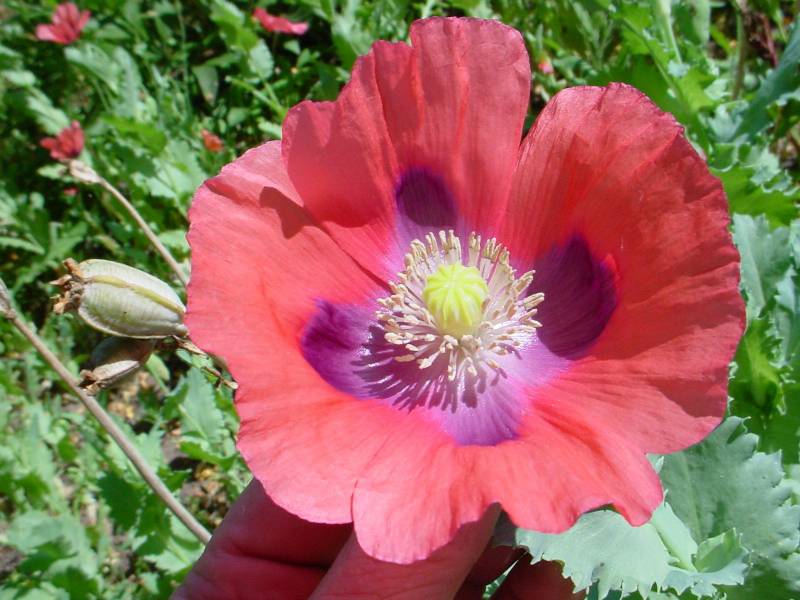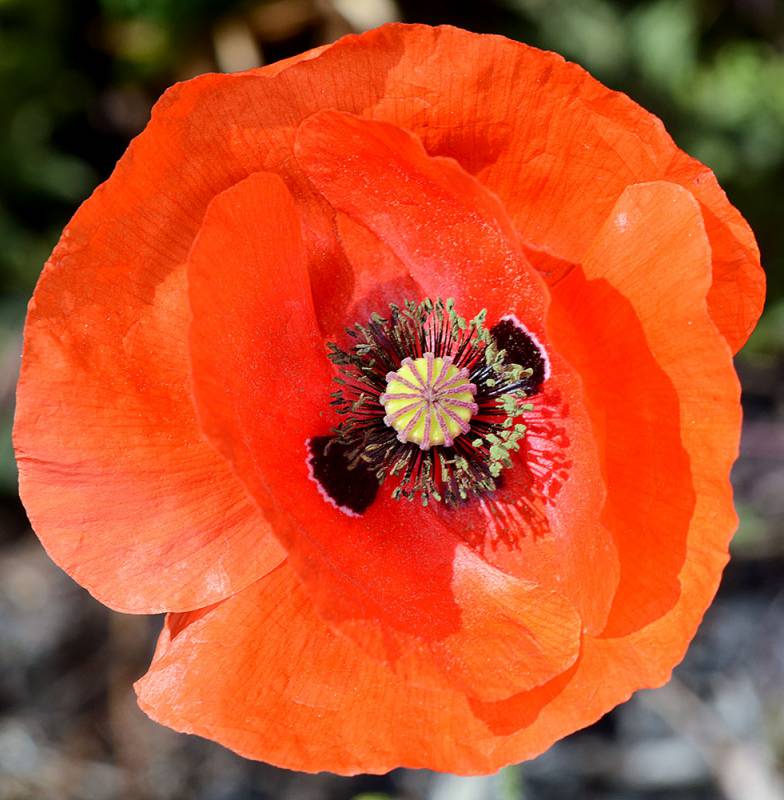Papaver somniferum
Papaver rhoeas
opium poppy
corn poppy
Leaves alternate, sessile and cordate-clasping, shallowly lobed, the lobes toothed, the margins somewhat crinkly.
Leaves alternate, basal and cauline, petiolate, the blades pinnately lobed or incised to divided.
Flowers single on long, bristly, terminal peduncles;
sepals 2, separately early-deciduous;
petals 4, white to purple, large, wavy-margined;
stamens numerous;
style absent, stigma sessile, disk-like, with 5-15 round, stigmatic ridges.
Flowers single on long, bristly, terminal and axillary peduncles;
sepals 2, separately early-deciduous;
petals 4, 5-7 cm. long, usually scarlet with a black, basal or central blotch;
stamens numerous;
style absent, stigma sessile, disk-like, with 5-15 round, stigmatic ridges.
Capsule glabrous, sub-globose, 2.5-5 cm. long.
Capsule glabrous, sub-globose to broadly obovoid, 10-15 mm. long.
Papaver somniferum
Papaver rhoeas
- Local floras:
BC,
CA,
OR,
WA
- Local Web sites:
CalFlora,
CalPhotos,
Flora NW,
PNW Herbaria
WildflowerSearch
iNaturalist (observations)
USDA Plants Database
- LBJ Wildflower Center
- SEINet
- Plants of the World Online
- Encyclopedia of Life
- Wikipedia
- Google Image Search
- Local floras:
BC,
CA,
OR,
WA
- Local Web sites:
CalFlora,
CalPhotos,
Flora NW,
PNW Herbaria
WildflowerSearch
iNaturalist (observations)
USDA Plants Database
- LBJ Wildflower Center
- SEINet
- Plants of the World Online
- Encyclopedia of Life
- Wikipedia
- Google Image Search



